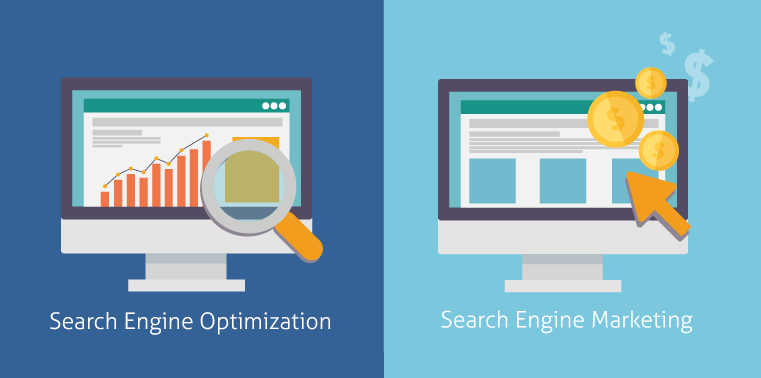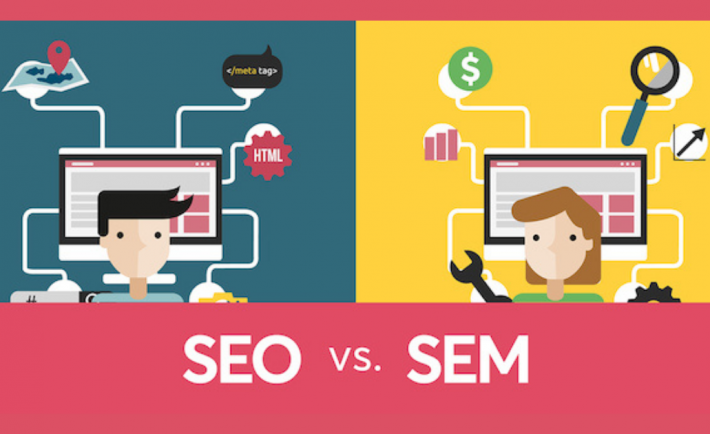If you’re involved in the business field, there’s a likelihood you’ve heard of SEO and SEM. These terminologies are commonly tossed around, but what do they mean exactly? Is there a difference between the two?
Although the distinction can be minimal, if you understand how to execute them effectively and correctly, they can lead the organisation to extremely high traffic and growth.
Let’s look at the difference between SEO and SEM and how they can be game-changers for your company. Ready for results? Let’s plunge into this integral part of marketing for your business.
An overview before we begin

Image Credits: Inc. Magazine
The average person will most definitely click on the top few links in a typical search on Google, right?
That’s why the first page on Google search is where you want your website to appear. These days, human attention is short, and it’s essential to be the first few to grab your target customers’ attention before your rivals do. Here’s where SEO and SEM come to play.
They’re ways to promote the company so that your potential customers can access them on search engines, such as Google or Bing. If your company has a website rival, SEO and SEM are essential for more traffic to be guided to your domain.
Let’s explore their primary purposes to grasp these promotional tools better.
SEO otherwise referred to as search engine optimisation, is a concept that lets you organically appear in search results. While SEM, known as search engine marketing, depends on paid strategies to get you ranked on search engines.
Here’s a more insightful look into both approaches.
The four parts of SEO
- Technical SEO – This focuses on improving your website’s technical aspects and constructing it to provide a fantastic user experience. It’s also part of on-page SEO.
- On-page SEO – Involves tweaking the web pages themselves so that search engines can understand your title tags, content, internal links, and URLs.
- Content SEO – Your content needs to match what the searcher intends to find. This is one of Google’s most important factors for its rankings. Consider these: keyword strategy, site structure, and copywriting.
- Off-page SEO – Connect your website to other trustworthy and high-authority webpages through hyperlinks, PR, or different strategies, and the search engines will push you up the ranks over time.
Now, moving on to SEM.
SEM and PPC
SEM includes PPC ads instead of organic growth. PPC is also better known as pay-per-click. In the form of embedded advertisements, Google or other search engines can showcase your website and display them to your prospective customers.
Not all campaigns, however, are expected to yield results. To make your advertising stand out so that you get the best bang for your buck, you will have to see what your rivals are doing and choose your keywords wisely.
SEO vs SEM

Image Credits: Matchcraft
- With every click your SEM ad gets, you have to pay.
- In the form of clicks, SEM usually has immediate effects, while SEO takes much longer.
- SEM advertisements give you more control over how they appear. This doesn’t apply much for SEO.
- SEM provides you with data specifics so that you can quickly tweak your advertising for instant results. When it comes to SEO, that’s a bit more challenging.
- Over time, SEO visibility expands, so the impact snowballs as you progress. With SEM, exposure comes to a halt as soon as you disable your advertisements.
Is one better than the other?
There is no straightforward answer as it falls on how your organisation is structured and what priorities you have at hand. But here are a few pointers to note:
- What is your objective? You want to go for SEM if it’s a short-term one.
- How is your current SEO health? SEM can be a great backer if it is already substantial.
- Go with SEM if you expect that your company would have a higher consumer lifetime value. SEO could be ideal if it’s the opposite.
- Did you have your sales and profits assessed? See if making a profit from SEM is practical for you. Go with SEO if it’s not urgent.
When it comes to driving traffic, either SEO or SEM is useful for your company. But why not use both? Most of the time, having the financial capacity to combine them will allow you to reap the benefits of both.
Here are some of the benefits of implementing both strategies:
- Do you recall how we mentioned data was available only for SEM but not for SEO? Well, now you can use SEM as a tester for your SEO strategy.
- Through incorporating remarketing strategies within your SEM plan, you will make your SEO efforts go the distance to convert those who didn’t buy before into paying customers in the future.
Final thoughts
Now that you know what SEO and SEM are all about, you can use your new-found insights to refine your competition strategy and make the best of both worlds to conquer the organic and paid regions. All the best in ranking your company site at the top of search engines!



